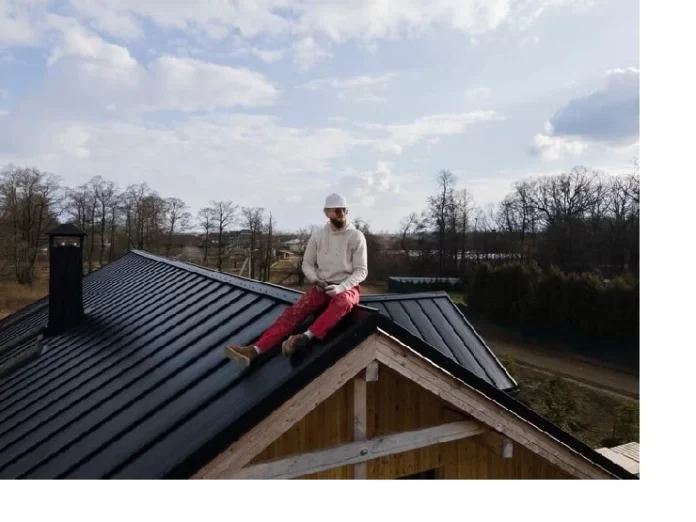Overview
Roof Part NYT are an important but often overlooked aspect of home construction and maintenance. From shingles to flashicng, the components that make up a roof play a crucial role in protecting homes from the elements. Understanding the different parts of a roof and how they function is key for homeowners, especially in areas like New York that experience tough weather conditions. This article will provide an in-depth look at the history and evolution of roof part nyt, with a special emphasis on how they have been covered in the influential New York Times (NYT) over the years. By reviewing case studies of notable NYT articles, we’ll see how the paper’s reporting has shaped trends and perceptions around roofing. We’ll also explore why regular maintenance of roof part nyt is so vital, examine predictions for future innovations in the field, and recap why this niche topic matters both for individual homeowners and the construction industry at large.
History of Roof Part NYT
Early roofing systems date back centuries, with thatch and wood shingle roofs being some of the earliest incarnations. By the late 19th century, slate, metal, and asphalt shingles became more prominent roofing materials. Flashing was also important on these early roofs to seal joints and prevent leaks. The 20th century saw further advances like fiberglass shingles and synthetic underlayment, allowing for lighter and more water-resistant roof part nyt. Building codes also evolved to include more specifications on roof load capacities and fire resistance. The NYT chronicled many of these developments, educating readers on roofing best practices and the emergence of new technologies.
Different Parts of a Roof
There are many components that make up a roof system. The exterior surface is composed of covering materials like asphalt shingles, metal sheeting, or tile. Underneath lies the underlayment or felt, which creates a waterproof barrier. The sloped roof decking provides structural support and is held up by roof trusses or rafters. At roof joints and edges, flashing is installed to prevent water seepage. Other parts like roof vents allow airflow while drip edge keeps water from collecting along the edges. Proper installation and maintenance of all these roof part nyt is key to ensuring durability. The NYT has often focused on explaining best practices for homeowners.
Roofing in New York Times
The NYT has published countless articles on roofing over the decades. From new material innovations to maintenance tips, the paper has educated generations of homeowners. For example, a 1950 article explored the emergence of asbestos cement shingles. In 1980, the NYT looked at how solar panels could be installed on rooftops. More recently in 2013, the paper assessed the resilience of roofs after Hurricane Sandy, finding improved building codes prevented major failures. Detailed service pieces have also walked homeowners through key points like inspecting roofs for damage and identifying leaks. The NYT’s broad, in-depth reporting on roofing reflects its significance for homeowners in its core New York market and beyond.
Case Studies
Let’s look at two seminal NYT articles on roof part nyt and their industry impact:
- A 1976 piece investigated faulty plastic grommets in roof flashing that were prone to deterioration. It cited industry research on the widespread issue and pushed for improved standards. This led to declines in plastic grommet use and more durable materials.
- In 1986, the NYT looked at advances in rubberized asphalt shingles. The article highlighted this emerging technology as more durable and fire-resistant. It grew in popularity after the coverage.
These articles exemplified the NYT’s influential reporting on real-world roofing issues.
Importance of Regular Roof Maintenance
As highlighted by the NYT’s expansive coverage, properly maintaining roof part nyt is essential for homeowners. Inspecting shingles and flashing yearly allows for identifying worn sections and preventing major leaks or rot. Cleaning out gutters regularly ensures proper drainage and prevents ice damming. Checking for roof damage after major storms is also key. Overall, following the maintenance tips covered in NYT articles can extend a roof’s lifespan and avoid costly repairs down the line.
Future Trends in Roofing
Based on emerging technologies covered in the NYT, future roofing trends may include:
- Wider adoption of solar shingles that generate electricity
- Metal panel and membrane roofs on more modern homes
- Advanced sealants and underlayments that better resist wind and water
- Composite shingles with recycled content and improved longevity
- Cool roof coatings that reflect heat and lower energy costs
These innovations could provide more durable and eco-friendly roofing options to homeowners and builders. The NYT will likely continue reporting on the real-world effectiveness of these new roof part nyt.
Conclusion
In summary, understanding roof part nyt is important for maintaining our homes and keeping families safe from the elements. The NYT has played an integral role in educating its readers on roofing and emerging technologies over many decades. Homeowners can apply the maintenance tips and material knowledge from NYT articles to extend their roof’s lifespan. And builders can adopt the cutting-edge roof part nyt showcased by the paper to construct more durable and energy-efficient homes. Roofing may seem like a niche topic, but it’s one that impacts us all. The NYT’s in-depth coverage reflects its real-world significance and will continue shaping best practices into the future.










